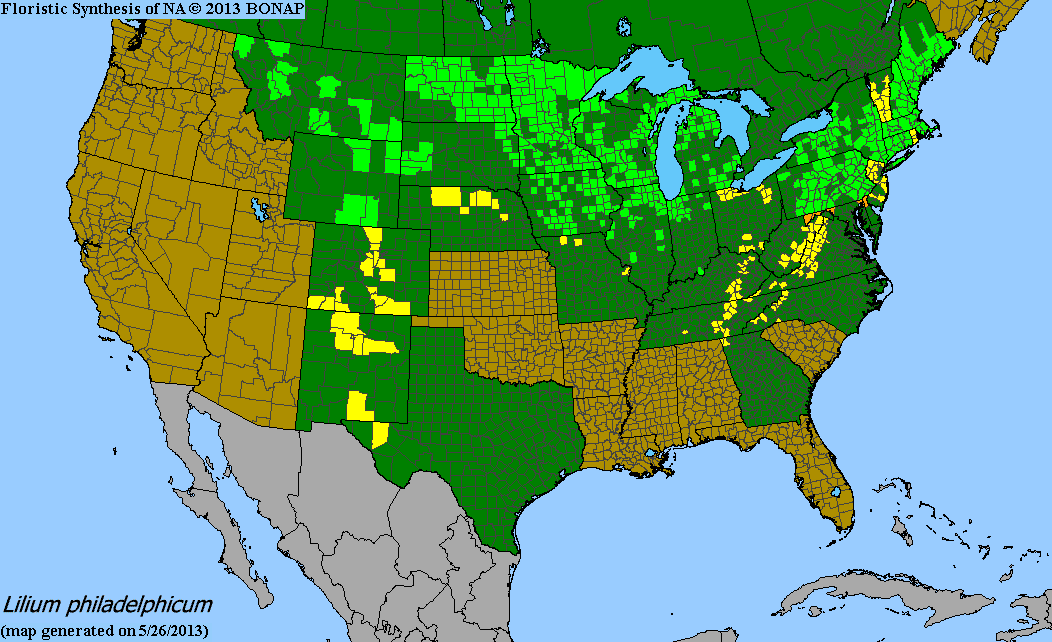Lilium Philadelphicum
Wood lily Description:
Lilium philadelphicum, commonly known as the Wood lily or Prairie lily, is a herbaceous perennial flowering plant that is native to North America. This lily is a member of the Liliaceae family and is closely related to other lily species such as the Turk's cap lily and the Michigan lily.
The Wood lily is a showy plant that can grow up to 3 feet tall and produces stunning, orange-red flowers that bloom during the summer months. Each flower can measure up to 10 cm (4 inches) in diameter and features six petals with prominent stamens and pistils. The flowers are highly attractive to a variety of pollinators, including bees, butterflies, and hummingbirds.
The Wood lily can be found in a variety of habitats, including woodlands, meadows, and prairies, and prefers well-draining soils with a neutral to slightly acidic pH. This plant is known for its hardiness and can tolerate a wide range of environmental conditions. The Wood lily is also an important plant for conservation, as it provides critical habitat and food for a variety of wildlife species.
Native Range:
Wood lily is found across most of Minnesota. More broadly, Wood lily can be found in most of the Midwestern States, Northeast States, as well as some Western states like Montana, Colorado, and Texas.
Standard Plant Information:
Plant Height: 1' - 3'
Bloom Time: June - August
Preferred Habitat: Does well in part shade to full sun. Often found dry woods, meadows, and prairies.
Sowing:
For most homeowners, the best option is to scatter seed on the ground by hand broadcasting at a minimum of 16-64 pls ounces per acre. For even coverage, we recommend that you broadcast seed in perpendicular rows across the site to ensure even coverage.
You’ll want to broadcast any grass seed first, which will get raked into the soil lightly. Next, it is ideal to mulch the area lightly with either a clean (no seed) straw or preferably with our native Little Bluestem straw, sold at our retail garden centers. After a light mulching is complete, now it’s time to broadcast your native wildflower seeds, which should not be raked into the soil. A good rain or watering is sufficient to cover the seed.
Planting:
Simply dig a hole in the soil slightly larger than the plant’s roots. Ensure that the soil line of the plant is maintained during the transfer (i.e. the plant should be at the same level with the ground as it was in the pot). Pack any loose dirt back around the plant and make sure you water it well the same day to ensure it has the best chance of survival.











